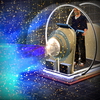Ambient Occlusion (AO) with IRay
 Dondec
Posts: 243
Dondec
Posts: 243
Is there any way to turn up the Ambient Occlusion effect in IRay? AO are the little shadows naturally occurring at wall corners etc. I've done my first few IRay renders and the AO is just not strong enough for my taste.
Thanks in advance for your advice.
- Don
Post edited by Dondec on


Comments
No there isn't a way to turn it up...but by carefully controlling your light sources and surfaces you should be able to make it more noticeable.
you can create and AO canvas and use that as a layer mask.
There are quite a few options for canvas nodes, as per attached pic
Thx Medzin. Can you tell me what "Interactive Only" means? I know what the "Interactive Render" feature is in the viewport, but fail to see how that could create a useable AO layer for Photoshop say. Thx
- Don
Shadow and AO passes require you to put Iray into Interactive Mode -- in the Iray panel, click on Render Mode, then choose Interactive.
For background, Iray offers two progressive rendering photorealistic modes (with really bad names given to them): Photoreal and Interactive. They are similar, except that Interactive is a somewhat simpler process that uses more biased rendering techniques. For example, you can turn shadows on and off in Interactive mode, whereas in Photoreal, this feature is hard-enabled.
Interactive doesn't support as many simultaneous textures or lights, and it does not support illumination using emissive geometries (so-called mesh lights will not work). So, depending on how you've set up your scene, it's not a given your scene will work out of the box in Interactive mode.
A quick side-by-side comparison showing basic lighting and texturing results
http://www.daz3d.com/forums/discussion/59450/iray-render-mode-comparison
Interactive mode is a separate render mode and isn't the same as the interactive render for the viewport.
You can find it in Render Settings > Rendermode.